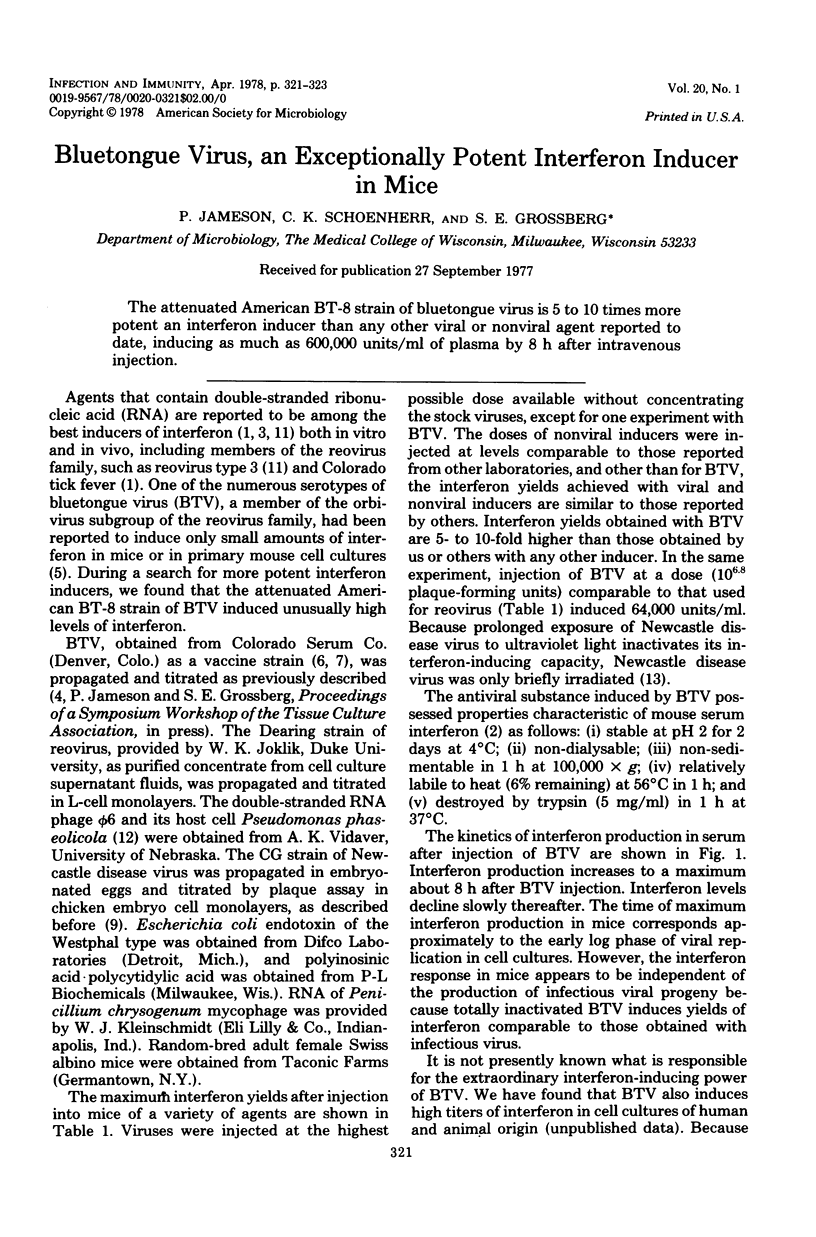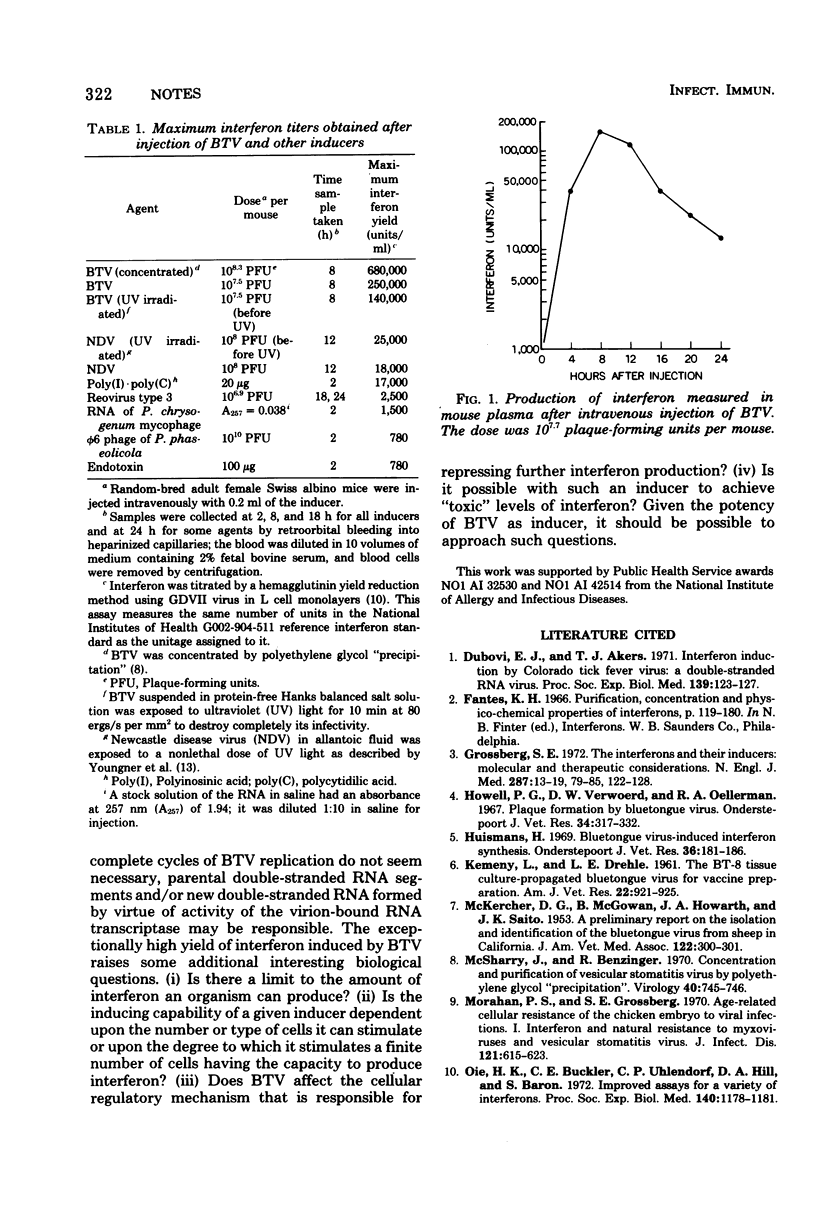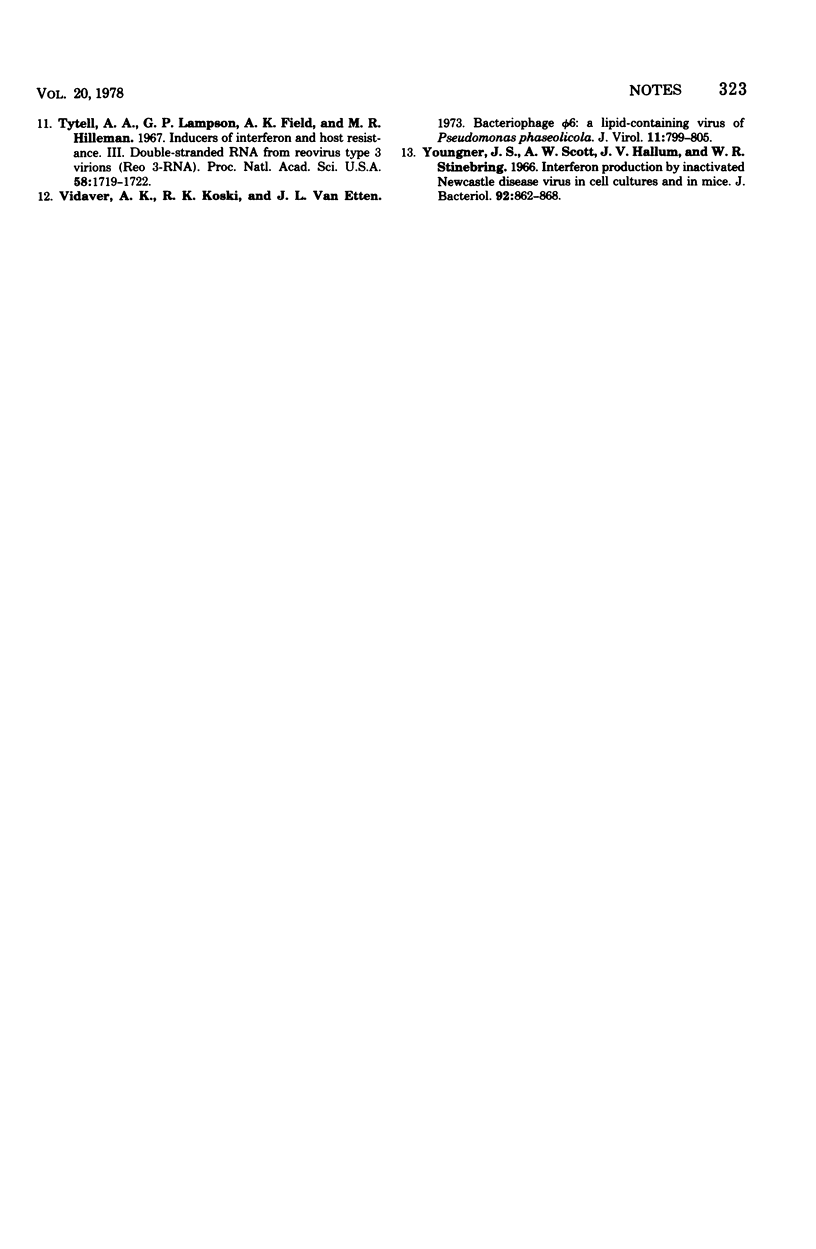Abstract
The attenuated American BT-8 strain of bluetongue virus is 5 to 10 times more potent an interferon inducer than any other viral or nonviral agent reported to date, including as much as 600,000 units/ml of plasma by 8 h after intravenous injection.
Full text
PDF


Selected References
These references are in PubMed. This may not be the complete list of references from this article.
- Dubovi E. J., Akers T. G. Interferon induction by Colorado tick fever virus: a double-stranded RNA virus. Proc Soc Exp Biol Med. 1972 Jan;139(1):123–127. doi: 10.3181/00379727-139-36093. [DOI] [PubMed] [Google Scholar]
- Grossberg S. E. The interferons and their inducers: molecular and therapeutic considerations. 1. N Engl J Med. 1972 Jul 6;287(1):13–19. doi: 10.1056/NEJM197207062870104. [DOI] [PubMed] [Google Scholar]
- Howell P. G., Verwoerd D. W., Oellermann R. A. Plaque formation by bluetongue virus. Onderstepoort J Vet Res. 1967 Dec;34(2):317–332. [PubMed] [Google Scholar]
- Huismans H. Bluetongue virus-induced interferon synthesis. Onderstepoort J Vet Res. 1969 Dec;36(2):181–185. [PubMed] [Google Scholar]
- KEMENY L., DREHLE L. E. The use of tissue culture-propagated bluetongue virus for vaccine preparation. Am J Vet Res. 1961 Sep;22:921–925. [PubMed] [Google Scholar]
- MCKERCHER D. G., MCGOWAN B., HOWARTH J. A., SAITO J. K. A preliminary report on the isolation and identification of the bluetongue virus from sheep in California. J Am Vet Med Assoc. 1953 Apr;122(913):300–301. [PubMed] [Google Scholar]
- McSharry J., Benzinger R. Concentration and purification of vesicular stomatitis virus by polyethylene glycol "precipitation". Virology. 1970 Mar;40(3):745–746. doi: 10.1016/0042-6822(70)90219-9. [DOI] [PubMed] [Google Scholar]
- Morahan P. S., Grossberg S. E. Age-related cellular resistance of the chicken embryo to viral infections. I. Interferon and natural resistance to myxoviruses and vesicular stomatitis virus. J Infect Dis. 1970 Jun;121(6):615–623. doi: 10.1093/infdis/121.6.615. [DOI] [PubMed] [Google Scholar]
- Oie H. K., Buckler C. E., Uhlendorf C. P., Hill D. A., Baron S. Improved assays for a variety of interferons. 1. Proc Soc Exp Biol Med. 1972 Sep;140(4):1178–1181. doi: 10.3181/00379727-140-36636. [DOI] [PubMed] [Google Scholar]
- Tytell A. A., Lampson G. P., Field A. K., Hilleman M. R. Inducers of interferon and host resistance. 3. Double-stranded RNA from reovirus type 3 virions (reo 3-RNA). Proc Natl Acad Sci U S A. 1967 Oct;58(4):1719–1722. doi: 10.1073/pnas.58.4.1719. [DOI] [PMC free article] [PubMed] [Google Scholar]
- Youngner J. S., Scott A. W., Hallum J. V., Stinebring W. R. Interferon production by inactivated Newcastle disease virus in cell cultures and in mice. J Bacteriol. 1966 Oct;92(4):862–868. doi: 10.1128/jb.92.4.862-868.1966. [DOI] [PMC free article] [PubMed] [Google Scholar]


